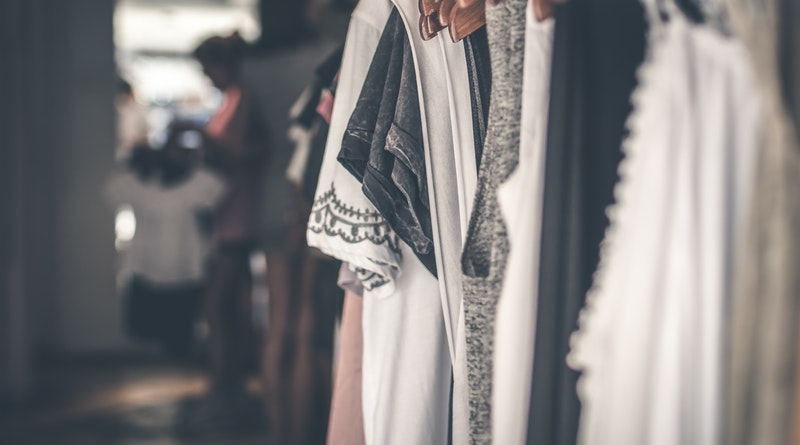Could Your Wardrobe Be Kinder To The Planet?

These days, the buzzword on everyone’s lips is eco-friendly. Our collective eyes have been opened much more over the past few years to how much damage humankind is causing to the planet. And it’s now much easier to find and shop with brands and corporations who have made it their mission to change their manufacturing process to leave less of an ecological footprint. But we all know that we need to be doing more to halt climate change and reduce the impact our modern lifestyles have. We’re all carbon offsetting our flights, making sure that we recycle in the home, trying to reduce food waste, switching to greener cleaning products, making our houses more energy efficient and evaluating our use of public transport. But there’s another area of our lives to give a green makeover to. Fast fashion is damaging the planet. Our cheap, new season looks come at a huge environmental cost. In fact, the fashion industry produces 10% of all carbon emissions, fills our oceans with polluting microplastics, contributes drastically to landfill, and is the second-largest consumer of the world’s water supply. Our addiction to disposable style has to stop – for the sake of our children’s future. So making a pledge for your wardrobe to be kinder to the planet is both an important thing to do, and something which is well within your control. There are a number of small, do-able but highly effective changes you can make to ensure that you look good, without your wardrobe costing the earth.
Buy Less And Better Quality
The first step is very simple and just involves a shift in your thinking. Instead of jumping on every new trend, or feeling like you need a new outfit each time you go out, learn to love the clothes that you have. The aim is to cut down on the amount that you buy and to purchase the best quality that you can afford. It’s better to have one classic piece that will always be stylish and that is extremely well made than it is to have twenty poor quality items that will go out of style in a few weeks. This can take a little bit of brain retraining for those of us who are used to showing off new clothes on our Instagram feeds every week. Start by creating a vision board for the style you want to achieve – think about the lifestyle you lead, the activities that you do, the shapes that suit your body and the colors which complement your skin and hair. Use Pinterest style boards to put together some images of celebrities, style bloggers and clothing items that you like. Then conduct a wardrobe audit. What pieces do you already own that appear on your board? What, if anything, is missing? Create a list of the missing items and commit to only shopping for these gaps in your wardrobe. Source the highest quality you can – that beautifully made wool coat or cashmere jumper is going to far outlast all the itchy nylon and polyester pieces. This is the start of taking a more conscious approach to shopping, and the result will also generally be more considered and stylish.
Stop Impulse Buying
We shop for clothes for a huge variety of reasons, and not many of them have much to do with whether we actually need the items filling our baskets. We are used to shopping as a way to cheer ourselves up, to reward ourselves for doing something we didn’t want to, to boost our self-esteem, or simply because something was on sale. But we need to understand the difference between an item that is cheap, and one that is good value. If a piece doesn’t cost very much, but we don’t wear it because it doesn’t suit our lifestyle or fit our bodies, then it wasn’t a bargain. Start thinking about your purchases more in terms of cost-per-wear. If you’re feeling the urge to click add to basket, give yourself some time and space to cool down first. Try making a wishlist, either in a notebook or by snapping a picture and saving it on your phone. Make a rule that you are not going to buy the item for two weeks. If you still want it after that time, go ahead and make the purchase – but you’ll be surprised by how many ‘must-have’ items lose their desirability when you have given it some thought.
Care For Your Clothes
How many items do you go through at a faster pace simply because you’re not caring for them correctly? Learning the basics of garment care and treating your items right can give them much more longevity. There is research to show that increasing the wear time of your existing wardrobe by just nine months could have a massive impact on the annual carbon, waste and water footprint of the planet of up to 20-30%. Learn what the symbols mean on the washing instruction tag and follow them. There are also some great products you can use to care for your clothes, like a jumper defuzzer or a leather restoring spray.
Choose Pre Loved First
One quick and amazing way to be both stylish and eco-friendly is to shop pre-loved in the first instance. Could you get the same item, or perhaps a better quality version, second hand? There are some great quality items to be found on platforms like Depop or even on eBay, or you could try looking in a charity shop, which has the added bonus of donating to a worthy cause at the same time. From barely worn to genuine vintage, your look will be far more unique and your conscience spotless!
Shop With Responsible Suppliers
It’s getting easier and easier to shop responsibly when you do need to make a purchase. There are brands dedicated to working more responsibly, such as People Tree or even the Conscious Collection at H&M. Or you can find boutiques online dedicated to clothing brands with a heart who are creating pieces out of sustainable materials and finding ways to make their manufacturing process cleaner and less resource-intensive. It’s easy to source what you need online, whether you’re searching for activewear manufacturers or wanting to shop for sustainable lingerie. You don’t have to sacrifice looking good for being socially responsible anymore.
Choose Sustainable Fabrics
There is a lot of confusion about which fabrics and materials are better for the planet. You could be forgiven for thinking that natural fibers like cotton are automatically the best choice, as they biodegrade easier than man-made fabrics derived from plastics, but actually cotton-growing takes intense water consumption. Things such as leather, silk, and wool can be good choices, but they don’t suit a vegan lifestyle. So what fabrics can you look out for when trying to be kinder to the planet? Fabric made from bamboo fibres is a good choice, as is lyocell – which comes from the eucalyptus tree. Also look out for modal (which is made from beech trees and is amazingly soft and drapey), rayon, viscose, and vegan leather, which is made from a huge range of materials including pineapples and mushrooms! You can also look for PU or polyurethane. This sounds quite chemical but it actually doesn’t require the same inputs as materials such as PVC, and it does biodegrade over time.
With a little smart shopping, you can save the planet and your budget, without compromising on style. Happy shopping!
What's Your Reaction?
Newly middle-aged wife of 1, Mom of 3, Grandma of 2. A professional blogger who has lived in 3 places since losing her home to a house fire in October 2018 with her husband. Becky appreciates being self-employed which has allowed her to work from 'anywhere'. Life is better when you can laugh. As you can tell by her Facebook page where she keeps the humor memes going daily. Becky looks forward to the upcoming new year. It will be fun to see what 2020 holds.



